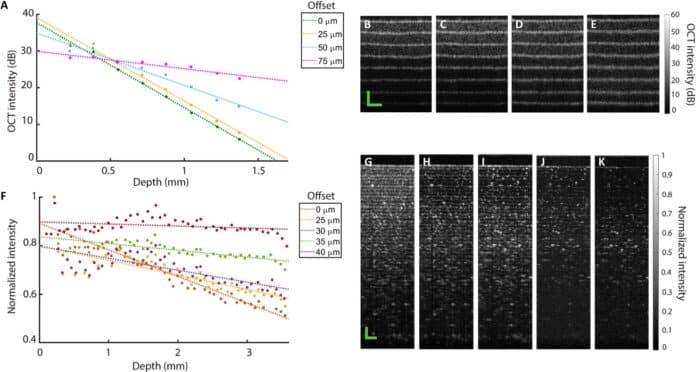Morphological imaging with optical coherence tomography (OCT) has made significant advances in the last few decades, revolutionizing applications in ophthalmology and expanding into other fields such as dermatology, cardiology, and cancer detection. It is also employed in various non-biomedical applications, including art conservation and nondestructive testing.
A team of researchers from the University of Adelaide in Australia, the Technical University of Denmark (DTU), Aerospace Corp in the United States, and academics from the University of St Andrews have made a technological breakthrough for optical coherence tomography (OCT), which could revolutionize applications in ophthalmology, dermatology, cardiology, and cancer detection.
The study, published in Science Advances, was led by an international team of experts from the University of Adelaide in Australia, the Technical University of Denmark (DTU), Aerospace Corp in the United States, and researchers from the University of St Andrews’ School of Physics and Astronomy.
Light imaging has made tremendous advances to date. With its unique mix of simplicity, ease of use to retrieve highly resolved picture information and versatility, its usage in biomedical imaging has achieved new heights in the previous decade. However, obstacles persist, such as recovering data from deep. This is a difficulty because light scattering in tissue obscures information at depth.
OCT relies on backscattered light within the sample, which is difficult to discern through fog or biological tissue scattering. The common thinking holds that light dominates the OCT signal, however, the team observed that selective capture of multiply scattered light can lead to better image contrast at depth, particularly in highly scattering samples. The group demonstrated
The researchers believe their breakthrough will defy convention and usher in a new era of deep image recovery. The OCT market is worth $1.3 billion in 2021 and is expected to triple by the decade’s end. This cutting-edge development would not have been possible without the UK and EU (H2020) and the Australian Research Council (ARC) financing.
This cutting-edge development would not have been possible without the UK and EU (H2020) and the Australian Research Council (ARC) financing.
Journal Reference:
- Mingzhou Chen, Gavrielle R. Untracht, et al. Spatially offset optical coherence tomography: Leveraging multiple scattering for high-contrast imaging at depth in turbid media. Science Advances. DOI: 10.1126/sciadv.adh5435
